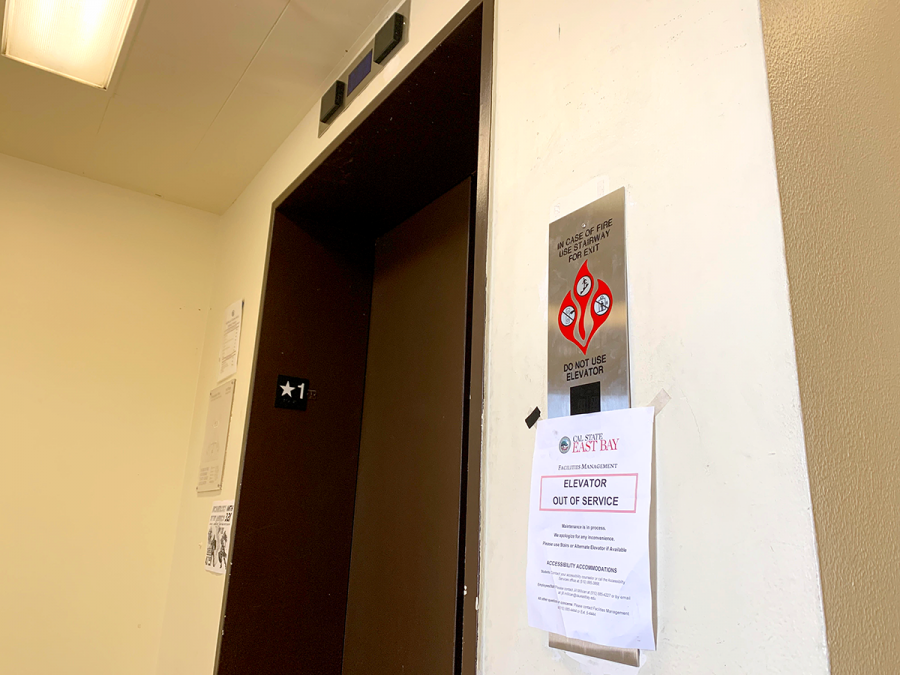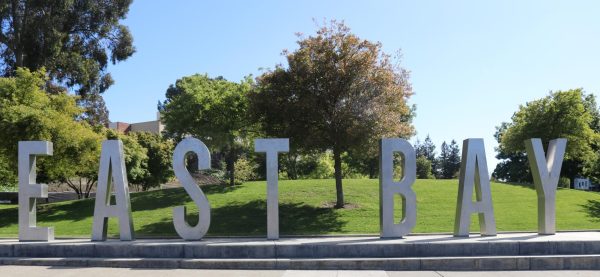Elevator updates raise accessibility concerns
September 19, 2019
The first step toward getting your degree is going to class, but what are students supposed to do when their classrooms are not physically accessible? Questions like these are being raised at California State University, East Bay as updates are being made to buildings on campus.
Recent updates to the elevator system in Meiklejohn Hall are bringing light to some concerns on the building’s accessibility and how students and faculty with mobility issues are accommodated.
The updates began just before the end of the 2018-2019 Spring semester, and the elevator is now running as of September 17, 2019. The single elevator that runs through the entire building was also unavailable for use during the shortened summer semester. The project was overseen and conducted by Schindler Elevator Corporation and the university’s facilities department.
With almost four months of inaccessibility to classrooms, it is worth questioning how administrators on campus have worked with students and faculty on how to make their classes more accessible.
Accessibility Services, which provides academic accommodations to students with disabilities, teamed with the Provost’s office, Online Education, University Scheduling, and the Facilities department to find unique ways to assist students and staff with any concerns regarding the building’s accessibility.
“[We] all worked together to address this, and we were able to move many classrooms to the first floor for students who needed that access,” Director of Accessibility Services Pamela Baird said in an interview.
Some classes were either too large or needed to be held in a specific room, which required extra steps to be taken.
“We had Information Technology Services coordinating and taking laptops into classrooms and helping the faculty member launch Zoom sessions for students to access remotely,” Baird said.
Zoom is a conference tool used by CSUEB that “allows for video, audio, and screen sharing for up to 200 participants,” according to the university’s Zoom webpage. This tool can be accessed through PC, Mac, Android, and iOS devices.
The elevator is now available for students and faculty, but the questions of campus accessibility are still in the air. New construction of the campus’ CORE building is underway, and hopefully, accessibility concerns have been voiced and addressed.
















